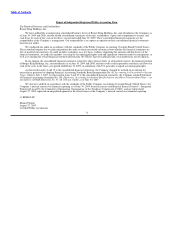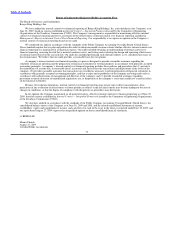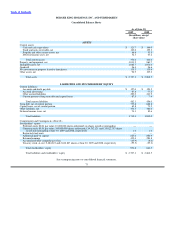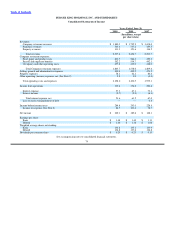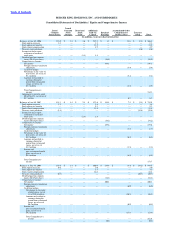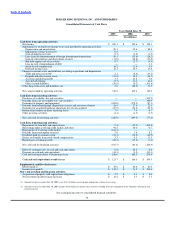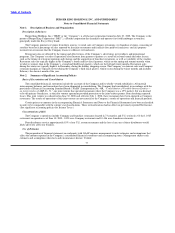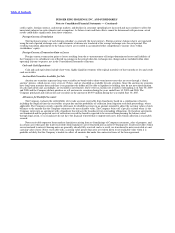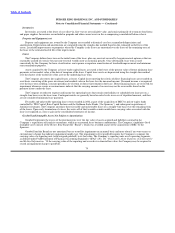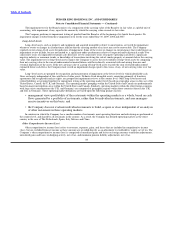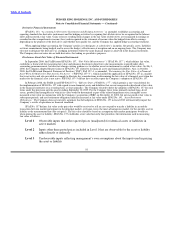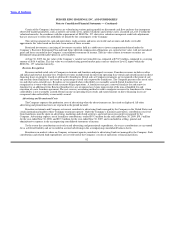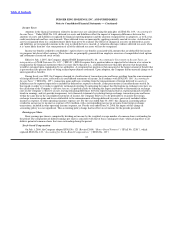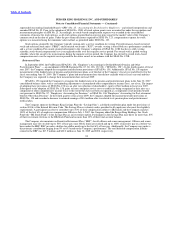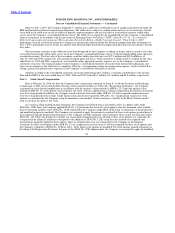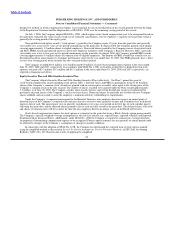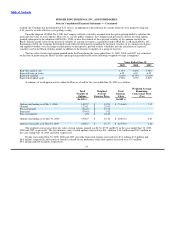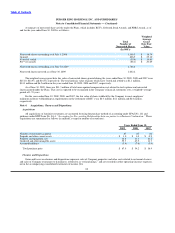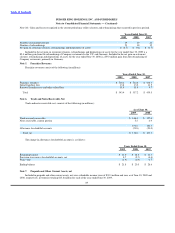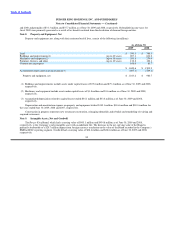Burger King 2009 Annual Report Download - page 83
Download and view the complete annual report
Please find page 83 of the 2009 Burger King annual report below. You can navigate through the pages in the report by either clicking on the pages listed below, or by using the keyword search tool below to find specific information within the annual report.
Table of Contents
BURGER KING HOLDINGS, INC. AND SUBSIDIARIES
Notes to Consolidated Financial Statements — (Continued)
The impairment test for the Brand consists of a comparison of the carrying value of the Brand to its fair value as a global unit of
accounting, with impairment, if any, equal to the amount by which the carrying value exceeds its fair value.
The Company performs its impairment testing of goodwill and the Brand as of the beginning of its fourth fiscal quarter. No
impairment charges resulted from these impairment tests for the years ended June 30, 2009, 2008 and 2007.
Long−Lived Assets
Long−lived assets, such as property and equipment and acquired intangibles subject to amortization, are tested for impairment
whenever events or changes in circumstances indicate that the carrying amount of an asset may not be recoverable. The Company
regularly reviews long−lived assets for indicators of impairment. Some of the events or changes in circumstances that would trigger an
impairment review include, but are not limited to, a significant under−performance relative to expected and/or historical results (two
consecutive years of comparable restaurant sales decreases or two consecutive years of negative operating cash flows), significant
negative industry or economic trends, or knowledge of transactions involving the sale of similar property at amounts below the carrying
value. The impairment test for long−lived assets requires the Company to assess the recoverability of long−lived assets by comparing
their net carrying value to the sum of undiscounted estimated future cash flows directly associated with and arising from use and
eventual disposition of the assets. If the net carrying value of a group of long−lived assets exceeds the sum of related undiscounted
estimated future cash flows, the Company must record an impairment charge equal to the excess, if any, of net carrying value over fair
value.
Long−lived assets are grouped for recognition and measurement of impairment at the lowest level for which identifiable cash
flows are largely independent of the cash flows of other assets. Definite−lived intangible assets, consisting primarily of franchise
agreements and reacquired franchise rights, are grouped for impairment reviews at the country level. Other long−lived assets and
related liabilities are grouped together for impairment testing at the operating market level (based on geographic areas) in the case of the
United States, Canada, the U.K. and Germany. The operating market groupings within the United States and Canada are predominantly
based on major metropolitan areas within the United States and Canada. Similarly, operating markets within the other foreign countries
with large asset concentrations (the U.K. and Germany) are comprised of geographic regions within those countries (three in the U.K.
and four in Germany). These operating market definitions are based upon the following primary factors:
• management views profitability of the restaurants within the operating markets as a whole, based on cash
flows generated by a portfolio of restaurants, rather than by individual restaurants, and area managers
receive incentives on this basis; and
• the Company does not evaluate individual restaurants to build, acquire or close independent of an analysis
of other restaurants in these operating markets.
In countries in which the Company has a smaller number of restaurants, most operating functions and advertising are performed at
the country level, and shared by all restaurants in the country. As a result, the Company has defined operating markets as the entire
country in the case of The Netherlands, Spain, Italy, Mexico and China.
Other Comprehensive Income (Loss)
Other comprehensive income (loss) refers to revenues, expenses, gains, and losses that are included in comprehensive income
(loss), but are excluded from net income as these amounts are recorded directly as an adjustment to stockholders’ equity, net of tax. The
Company’s other comprehensive income (loss) is comprised of unrealized gains and losses on foreign currency translation adjustments,
unrealized gains and losses on hedging activity, net of tax, and minimum pension liability adjustments, net of tax.
80


